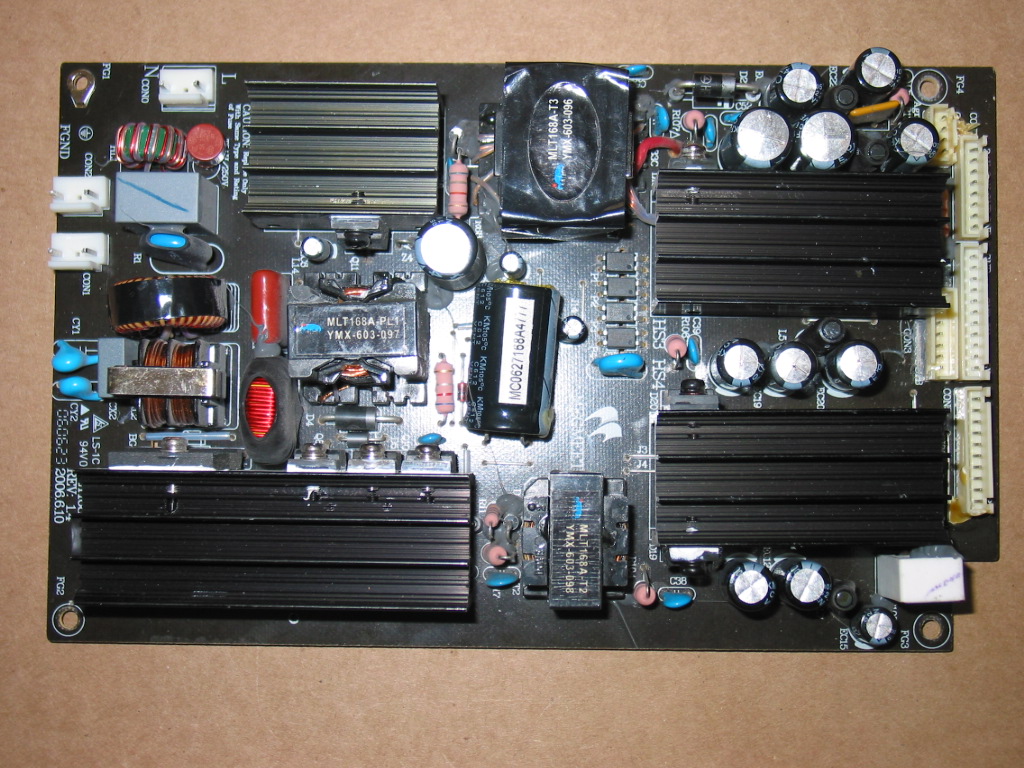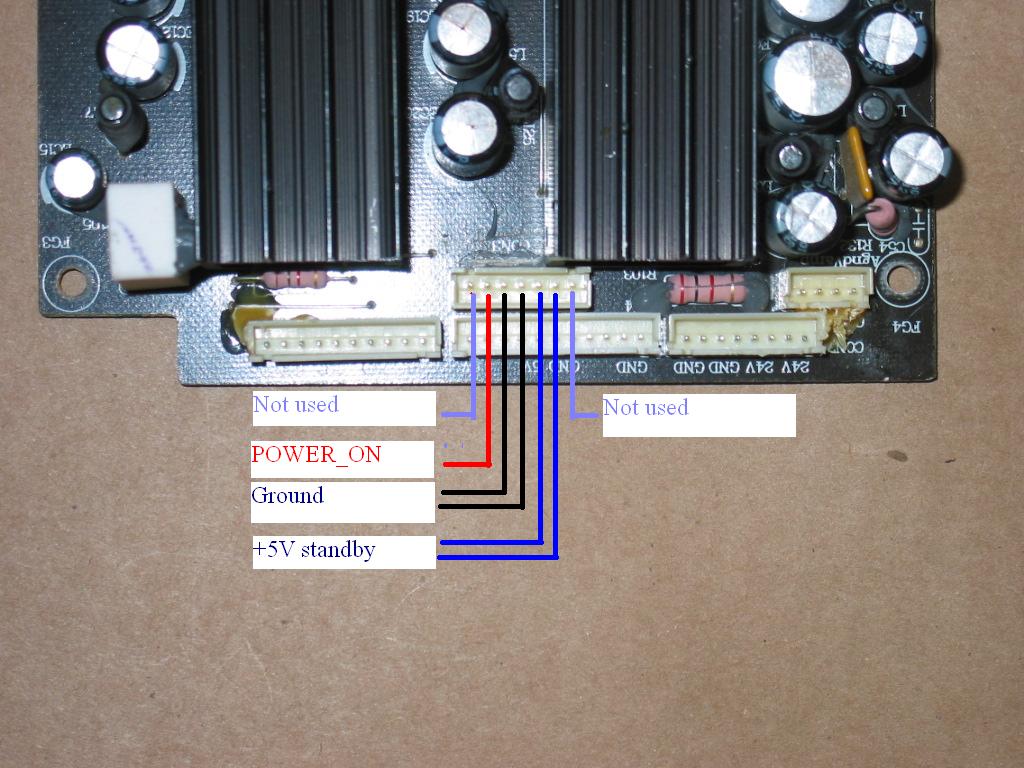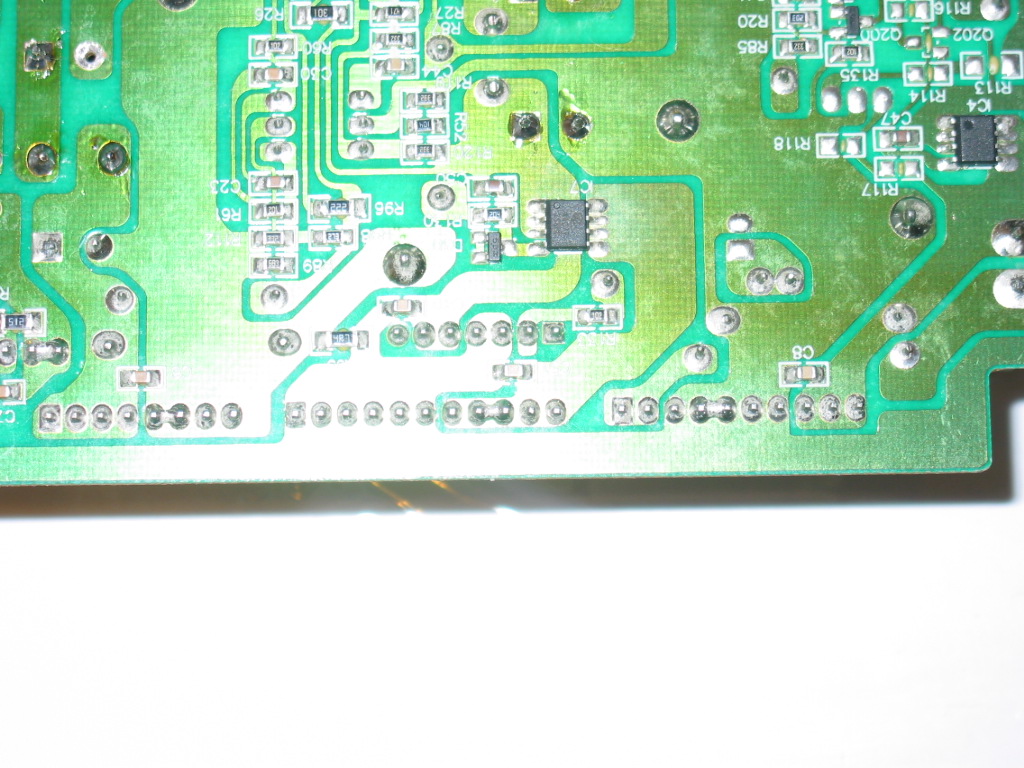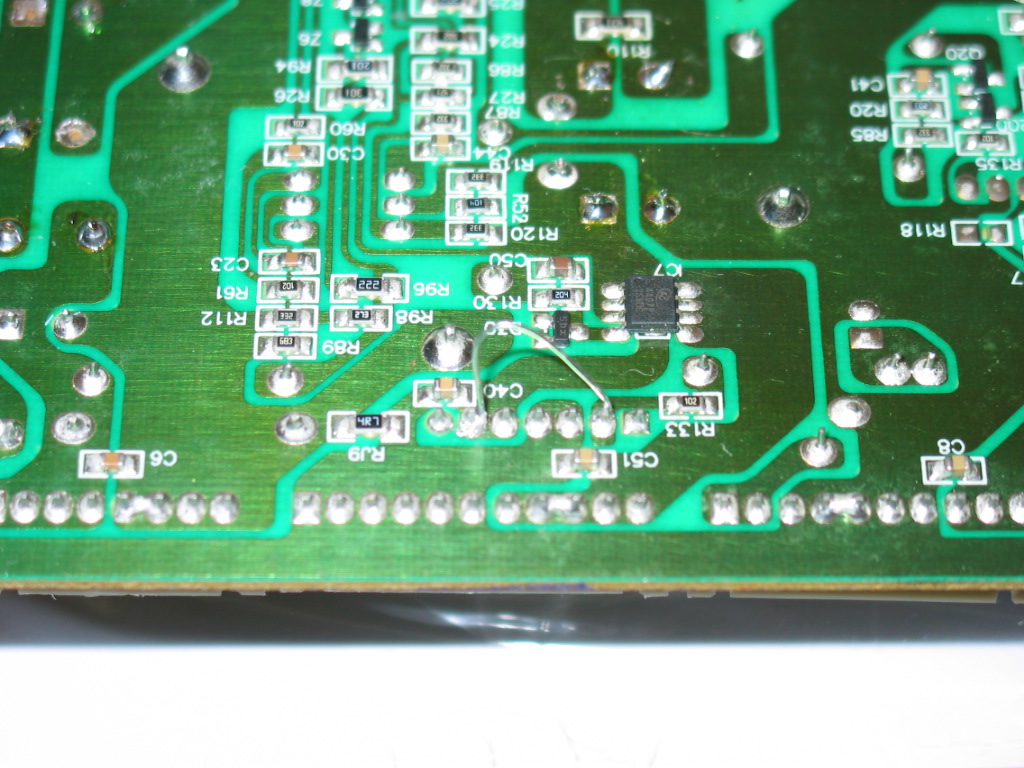MGMEET MLT168A is very similar to MLT166A about which I had blogged before.
Here is how it looks from the top:
The power input is the single one at the upper left corner, just below the top edge of the board. Its pins are marked with N and L.
All the outputs are on the right side of the board.
When AC is connected to the board there is a single 5V output and it is on the connector marked CON3.
Those 5V are called standby voltage and are used to tell the power board, through another pin on CON3 to wake up and generate all other voltages needed for the normal TV operation.
Using a voltmeter you can check if you have 5V on the appropriate pins on CON3 as per the following illustration (click to see full image):
So, once again, when power board is supplied AC the only output voltage that should be there is the +5V standby voltage. Using a voltmeter you should be able to measure 5V between either of the two pins as displayed above and the ground (which is any of the Ground pins or the TV chassis).
To turn on the rest of the voltages you need to pass the +5V from the standby to the POWER_ON pin.
If there's a cable plugged in in CON3 you can use a wire to short those two. It's OK to short +5V directly there for reasons we will see in a minute.
We didn't have a good connector so we turned the board and soldered a short wire between those two.
Here is how the back of the board looks where the output connectors are:
And here is what it looks like when we passed the +5V to the POWER_ON pin:
While usually it is not recommended to pass +5V directly to anything (just out of precaution) in this case it is easy to see that there is a resistor (R133) at the input of the POWER_ON line. This means it is completely safe to pass +5V directly there.
Once you have signaled (turned on) the power board you should be able to measure all other voltages as indicated at the top side of the board near the connectors - +12V, +9V and +24V.
Note they may be slightly off the printed values. If you get 11V instead of 12V that's OK as long as it is stable.
If it fluctuates or if it is off by more than 10% you've got a problem.
And if you've got a problem you know who to call.
No, AFTER the ghost busters!
Saturday, February 26, 2011
Subscribe to:
Post Comments (Atom)




0 comments:
Post a Comment